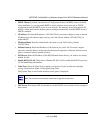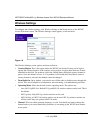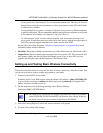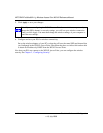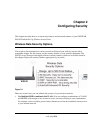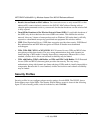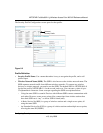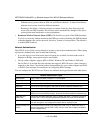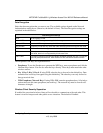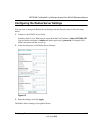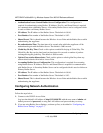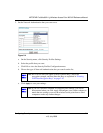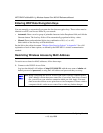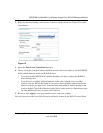
NETGEAR ProSafe 802.11g Wireless Access Point WG102 Reference Manual
Configuring Security 2-5
v1.0, July 2008
Data Encryption
Select the data encryption that you want to use. The available options depend on the Network
Authentication setting above (otherwise, the default is None). The Data Encryption settings are
explained in the table below:
The Passphrases and Keys are explained below:
• Passphrase. To use the Passphrase to generate the WEP keys, enter a passphrase and click the
Generate Keys button. You can also enter the keys directly. These keys must match the other
wireless stations.
• Key 1, Key 2, Key 3, Key 4. If using WEP, select the key to be used as the default key. Data
transmissions are always encrypted using the default key. The other keys can only be used to
decrypt received data.
• WPA Passphrase (Network Key). If using WPA-PSK, enter the passphrase here. All wireless
stations must use the same passphrase (network key). The network key must be from 8 to 63
characters in length.
Wireless Client Security Separation
If enabled, the associated wireless clients will not be able to communicate with each other. This
feature is used for hotspots and other public access situations. The default is Disabled.
Data Encryption Settings
None No encryption is used.
64 bits WEP Standard WEP encryption, using 40/64 bit encryption.
128 bits WEP Standard WEP encryption, using 104/128 bit encryption.
152 bits WEP Proprietary mode that only works with other wireless devices that support this mode.
TKIP This is the standard encryption method used with WPA.
AES This is the standard encryption method for WPA2. Some clients may support AES
with WPA, but this is not supported by this Access Point.
TKIP + AES This setting supports both WPA and WPA2. Broadcast packets use TKIP. For unicast
(point-to-point) transmissions, WPA clients use TKIP, and WPA2 clients use AES.



